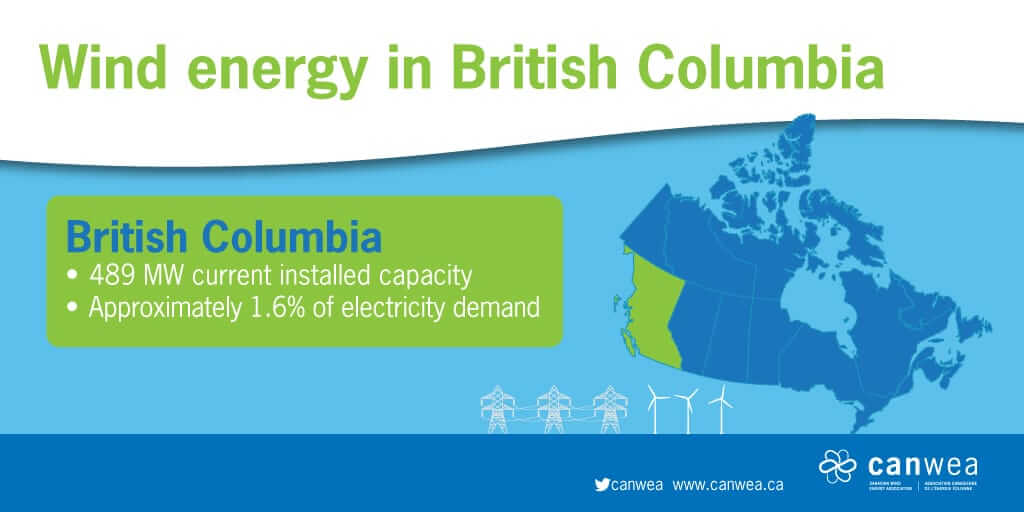The Canadian Wind Energy Association’s (CanWEA) and the Clean Energy Association of B.C (CEABC) teamed up in 2017 to provide input into the B.C. Utility Commission’s Site C Inquiry. The proposed Site C project is for a large-scale earth fill hydroelectric dam located in northeast British Columbia, seven kilometers southwest of Fort St. John in Canada.

According to CanWEA, falling costs and scalability increase the value of wind energy, particularly in this time of uncertain demand forecasts. Check out British Columbia’s wind energy by the numbers here.
CanWEA and CEABC commissioned Power Advisory LLC to conduct an independent analysis of the costs and benefits of wind, solar, small hydro and battery storage in the province, as well as the relative benefits and risks of these technologies compared to Site C. The analysis found wind energy is a cost-competitive alternative to large hydro development, and has additional benefits that lead to better outcomes for ratepayers.
Power Advisory LLC president John Dalton summarized the report’s findings in a technical presentation made to the inquiry on behalf of CanWEA and CEABC.
A survey of B.C. First Nations also found that 98% want to see more opportunity to develop clean-energy projects in the province. Of the 105 that responded, nearly half are involved in the clean energy sector in some way, and 61% said the biggest barrier they face is the lack of opportunity to sell power to B.C. Hydro.
Recently, the British Columbia Utilities Commission in a follow-up to its Inquiry Respecting Site C released a Final Report to the Government of British Columbia. CanWEA’s VP of policy and communications has issued this statement following the release of the
“The Canadian Wind Energy Association (CanWEA) is pleased to see that the British Columbia Utilities Commission’s (BCUC) Final Report to the BC Government released today has concluded that a mix of alternative energy sources, like wind energy, can provide similar benefits to ratepayers as the Site C hydroelectric project with an equal or lower Unit Energy Cost.
“This is consistent with many analyses that have concluded that wind energy is the most-cost-competitive form of non-greenhouse gas emitting electricity generation available today in Canada. Indeed, more wind energy has been built in Canada over the last decade than any other form of electricity generation.
“CanWEA notes that the BCUC also concluded that future growth in electricity demand will likely be lower than had been assumed in the Site C project forecasts. Given the uncertainty inherent in projecting future electricity demand growth, wind energy is well positioned to reduce risk for ratepayers because its scalability and relatively short construction timelines provide much more flexibility to system planners seeking to match future supply to future demand.
“CanWEA was also pleased to see the BCUC recognize that the variability of wind energy generation does not pose a major challenge to B.C. in alternative scenarios to Site C because B.C. already has substantial dispatchable hydro capacity in place.”
CanWEA is the voice of Canada’s wind energy industry, actively promoting the responsible and sustainable growth of wind energy.
Filed Under: News, Policy, Projects




